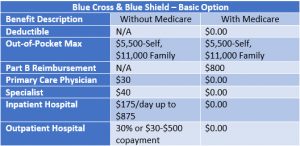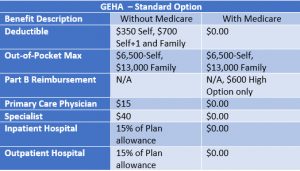Posted on Saturday, 14th December 2019 by Dennis Damp
 Print This Post
Print This Post
I have a medical condition called Paroxysmal Atrial Fibrillation (PAF), intermittently my heart goes into arrhythmia. This past year I ended up in the emergency room when I wasn’t able to control the attack with traditional methods. The ER doctor asked if I took my EKG with my Apple watch during the attack. Unfortunately, I had the older series 3 version that doesn’t have this feature. A watch that can take an EKG! Unbelievable, but true. It’s amazing what they can jam into a small package these days. Recently, I ungraded to a Series 5.

Eight Apps Located on Face of Watch
Request a Federal Retirement Report™ today to review your projected annuity payments, income verses expenses, FEGLI, and TSP projections.
I purchased my new series 5 GPS model during black Friday. You can buy two versions, a GPS or a GPS + cellular model. The cellular model is an actual cellphone that you can use independent of your standard iPhone. The GPS model requires your iPhone to be close by to use some of the functions. I was hesitant because I have so many hi-tech devices; setup can be tricky and nerve racking to say the least. That wasn’t the case for my new Apple series 5 watch. I gave my series 3 watch to my wife and initiated the setup on my iPhone for my new watch. When you sync another Apple watch to your iPhone it turns on your phone’s camera. You simply point the camera at the face of your new watch and it automatically sets it up plus transfers all of your existing aps to your new watch. It was easy to set up and anyone can do it. Now my wife and I both have Apple watches.

Traditional Face – One of Many Available
The functions, called apps, are truly amazing. The Activity app tracks the number of steps you take daily, the miles you traveled, and how many times you went up and down a flight of stairs. It also tracks how often you stand, move and exercise. The heart rate function tracks and graphs your heart rate throughout the day and night. You can visually see your heart rate graph for the entire day with the high, low, average and resting heart rates!

One of my favorites is the ECG, equivalent to an EKG function. Just tap the icon for this function on your watch, place your finger lightly on the side button, and it records a 30 second EKG. It displays the results and will let you know if you are in A Fib. Go to the health app on your phone to review the entire 30 second EKG and you can send a copy to your doctor. Not only will this app perform an EKG, it monitors your heart throughout the day and will vibrate if you go into A Fib. You can also set high and low heart rates and the watch vibrates if you exceed these limits. It will sense an A Fib attack coming often before I am aware of it. This early warning allows me to take magnesium that I use to control this condition during the early stages of the event before it gets too far along.

There are a number of safety features that can be life-saving. You can call 911 in an emergency. They have a function that senses when you fall and if you don’t move for 1-minute they call 911 and give them your location! I accidently triggered this function when I took off my watch and put it down too hard on the bathroom counter one night. The watch began vibrating and several prompts showed up on the screen. One for 911, and two others stating “I fell but you are OK” or that “I didn’t fall .” You can tap on 911 if you need help immediately, if you don’t respond or move for 1-minute they call 911 for you. A great feature for those living alone.

Heart Rate Monitor
Ahead of my doctor’s appointment the other day the watch announced that I should leave for the appointment 25 minutes before the scheduled time, traffic was light with an 18-minute commute! The new series 5 has an always on feature where you don’t have to turn your wrist to activate the display like the older series. I turned this off because it drains the battery and requires more frequent charges. The watch goes about 2 days between charges because I wear mine night and day. My wife turns hers off at night and she charges her watch every 4 or 5 days. It even tracks a woman’s menstrual cycle! These are some of the Apple watch’s unique and helpful apps:
- Clock
- World clock
- Stop watch
- Multi-function timer
- Alarm
- Calculator
- Activity tracker
- EKG
- Pulse rate
- Weather and alerts
- Scheduler & event tracker
- Compass
- Activity tracker
- Email notifications
- Audio books
- Music player
- Radio
- Walkie-Talkie function
- Menstrual cycle tracking
- Sound Level (db) detection with alerts
- SERI queries
- Messages
- Voice recorder
- Breathing alerts
- Maps & GPS
- Multiple watch faces
- Picture display
- Apple pay, you can pay for products and services with your watch
The Apple Watch is a worthwhile investment and I use mine frequently throughout the day. When I cook, I use the timer. I target 10,000 steps a day and it reminds you when you are too inactive. In the winter months I walk between 7,000 to 10,000 steps daily, summer months I average 10,000 to 12,000. My wife beats me every day averaging 10,000 + steps daily year-round. When I’m out and about I use the voice recorder to capture things that I don’t want to forget. I’m constantly asking SERI for help. I press the side button and say things like “How old is Clint Eastwood” when watching one of his movies or “What time is the Steeler game on today?” SERI faithfully replies to my requests. I display family photos of our grandkids on my watch when I’m not using one of its other functions; you can display any picture that resides on your cell phone.

Use the Display For Favorite Pictures
If you decide to buy an Apple watch be sure to get the series 4 or 5 if you want the EKG function. For me it was well worth the cost, $359 for the peace of mind and convenience that it offers. I purchased the 40 mm, they have a larger 44 mm size, it’s about $50 more. Look for sales and the longer the Series 5 is out the lower the price will be. You have to have an iPhone to sync and use your Apple watch. Unfortunately, android phones won’t sync to the Apple watch.
Scheduling A Retirement Benefits Seminar
Federal Employee Benefits Advocates (FEBA) provides comprehensive benefit briefings for Federal employees so they can make informed retirement decisions. Briefings include information on CSRS or FERS Retirement Annuities and all insurance programs including Medicare, the Thrift Savings Plan (TSP), Social Security, disability and other relevant retirement planning topics.
Schedule A Seminar in Your Area
Federal Employee Benefits Advocates (FEBA) provides comprehensive benefit briefings for Federal employees so they can make informed retirement decisions. Briefings include information on CSRS or FERS Retirement Annuities and all insurance programs including Medicare, the Thrift Savings Plan (TSP), Social Security, disability and other relevant retirement planning topics.
Benefits Administration Letter 11-104 requires agencies to educate employees on how to plan for retirement. FEBA assists Federal agencies to comply with this directive. HR departments can Contact FEBA to schedule briefings for their area.
Helpful Retirement Planning Tools / Resources
Request a Federal Retirement Report™ today to review your projected annuity payments, income verses expenses, FEGLI, and TSP projections.
Disclaimer:Opinions expressed herein by the author are not an investment or benefit recommendation and are not meant to be relied upon in investment or benefit decisions. The author is not acting in an investment, tax, legal, benefit, or any other advisory capacity. This is not an investment or benefit research report. The author’s opinions expressed herein address only select aspects of various federal benefits and potential investment in securities of the TSP and companies mentioned and cannot be a substitute for comprehensive investment analysis. Any analysis presented herein is illustrative in nature, limited in scope, based on an incomplete set of information, and has limitations to its accuracy. The author recommends that retirees, potential and existing investors conduct thorough investment and benefit research of their own, including detailed review of OPM guidance for benefit issues and for investments the companies’ SEC filings, and consult a qualified investment adviser. The information upon which this material is based was obtained from sources believed to be reliable, but has not been independently verified. Therefore, the author cannot guarantee its accuracy. Any opinions or estimates constitute the author’s best judgment as of the date of publication, and are subject to change without notice. The author explicitly disclaims any liability that may arise from the use of this material.
Posted in LIFESTYLE / TRAVEL, RETIREMENT CONCERNS, SURVIVOR INFORMATION, WELLNESS / HEALTH
Comments (0)|  Print This Post
Print This Post
 Print This Post
Print This Post

 Print This Post
Print This Post














